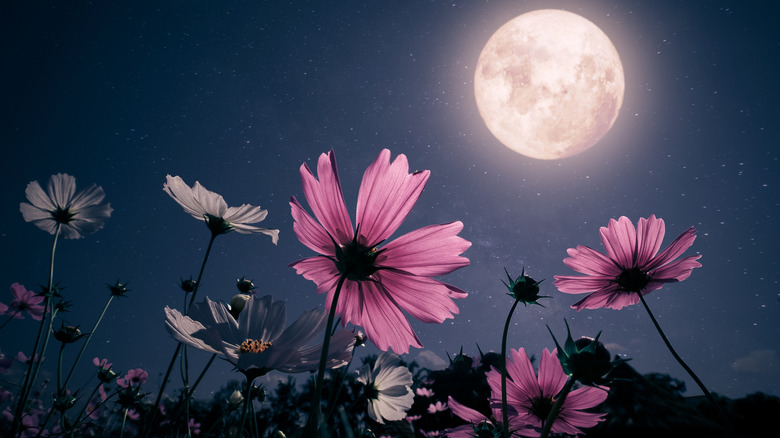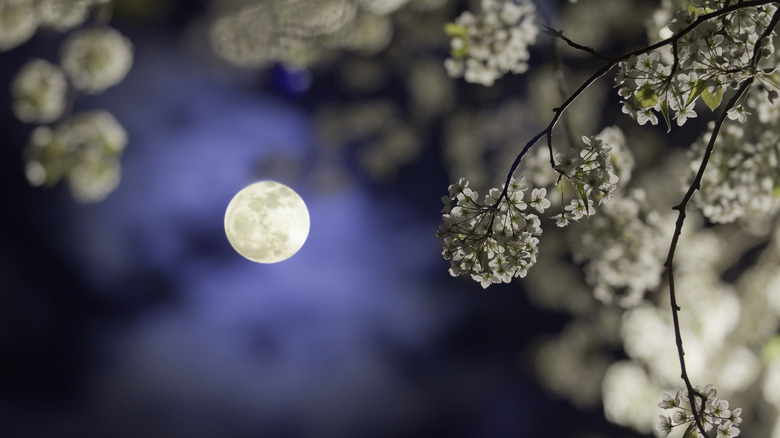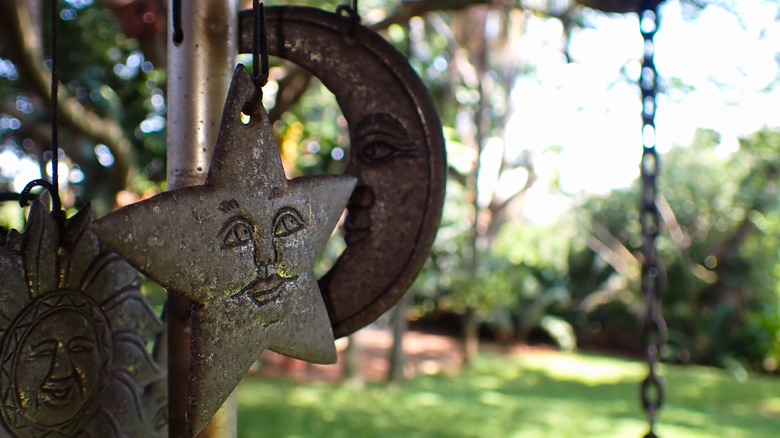How To Get On Board The Moon Garden Trend
Just hearing the name "moon garden" may conjure up romantic images of ghostly flowers lit by moonlight. And the reality is just as beautiful — there are plants that thrive and bloom in nighttime. While creating a garden like this may seem intimidating, it's actually easier than it sounds. It's just a matter of choosing the right plants, limiting sources of light pollution nearby, and using outdoor decor like benches, wind chimes, and mirrors to bring the whole garden to the next level.
While these types of gardens may be spiking in popularity, moon gardens are not a new concept — so you have centuries of gorgeous examples to draw from. You can make your moon garden as simple or complex as you want, creating a basic version with just annuals or investing in an elaborate garden that includes trees, shrubs, and other perennials. As long as you choose plants that reflect the moonlight, you won't be disappointed. And while you certainly aren't required to start your planting under a full moon, doing so may add to your mystery and enjoyment.
Picking the right plants for your moon garden
While almost any white or light-colored flowers should look beautiful in the moonlight, make sure you don't pick plants that close their blooms at night. Consider creating your garden around a white flowering tree to create a whimsical and elegant canopy that can blanket your yard with glowing, white blooms. Large shrubs like 'Limelight' hydrangeas are also perfect additions. Not only are they beautiful while in bloom, but their dried flowers will also ensure that your garden has plenty of shimmery winter interest.
Annuals and herbaceous perennials with white blooms can round out the garden. While flowers like irises and peonies are popular, you can also focus on North American native plants and opt for blooms like dune primroses and beardtongues. White flowers are an important aspect of moon garden plants, but don't forget to include some shimmery silver foliage as well. Lamb's ears and dusty millers can be perfect for this. You may wish to avoid moonflower plants — these are invasive in many warmer climates.
Preventing light pollution and adding decor
The glow of the moonlight in your garden may add to its serenity and elegance, but the same is not likely true for random and intrusive outdoor lighting, which can harm the natural ambiance you're going for. Even worse, this light pollution can be harmful to nocturnal pollinators and other animals. Outdoor lighting does have its purposes for safety though, so carefully evaluate your lighting sources and decide which — if any — can be either removed or changed to be motion activated. A UCLA-Smithsonian study found that amber-colored lighting is the least likely to attract and harm insects.
The final touches to add to your moon garden are decor and furniture. Creating a comfortable place to sit and enjoy your garden is a must. You may also want to add wind chimes, mirrors, gazing balls, or even a bird bath or water feature to your garden to create the most soothing atmosphere possible. These additions will also add interest to your moon garden during daylight hours.


